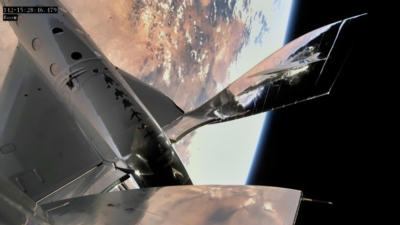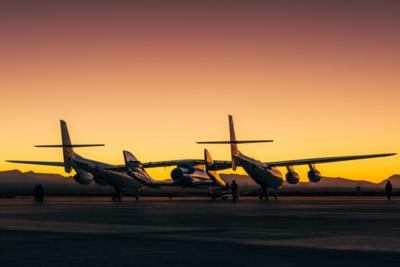Mon, Jun 28, 2021
Commercial Space Transportation Operator License Will Allow Carriage of Space Flight Participants
Virgin Galactic has reported that the FAA updated the Company’s existing commercial space transportation operator license to allow the spaceline to fly customers to space.

The Company also announced that it has completed an extensive review of data gathered from its May 22 test flight and confirmed that the flight performed well against all flight objectives.
The adjustment to Virgin Galactic’s operator’s license, which the Company has held since 2016, marks the first time the FAA has licensed a spaceline to fly customers. It is further validation of the Company’s methodical testing program, which has met the verification and validation criteria required by the FAA.
Michael Colglazier, Chief Executive Officer of Virgin Galactic, said, “We’re incredibly pleased with the results of our most recent test flight, which achieved our stated flight test objectives. The flight performed flawlessly, and the results demonstrate the safety and elegance of our flight system. Today’s approval by the FAA of our full commercial launch license, in conjunction with the success of our May 22 test flight, give us confidence as we proceed toward our first fully crewed test flight this summer.”

The May 22 test flight of VMS Eve and VSS Unity was the Company’s third crewed spaceflight and the first-ever spaceflight from Spaceport America, New Mexico. The flight achieved a speed of Mach 3 and reached space at an altitude of 55.5 miles.
After an extensive review of the data collected during the flight, the Company confirmed that:
- The rocket-powered test of the spaceship’s upgraded horizontal stabilizers and flight controls demonstrated strong performance, in line with predictions. These enhanced systems, which allow for finer pilot control, will also be deployed in future spaceships in the Company’s fleet.
- The cabin environment data was in line with predictions.
- The flight successfully carried three revenue-generating research experiments that tested and demonstrated technologies in microgravity as part of NASA’s Flight Opportunities Program. The pilots flew VSS Unity on a specific trajectory designed to meet the objectives of these research experiments.
With the data analysis from the May flight now complete, Virgin Galactic will continue preparing for the remaining three test flights.
More News
With Testing Soon Complete, Launch Preparations Begin in Earnest Sierra Space's Dream Chaser has been put through the wringer at NASA's Glenn Armstrong Test Facility in Ohio, but w>[...]
Takeoff Roll The process whereby an aircraft is aligned with the runway centerline and the aircraft is moving with the intent to take off. For helicopters, this pertains to the act>[...]
“We’re proud of the hard work that went into receiving this validation, and it will be a welcome relief to our customers in the European Union. We couldn’t be mor>[...]
"Aircraft Spruce is pleased to announce the acquisition of the parts distribution operations of Wag-Aero. Wag-Aero was founded in the 1960’s by Dick and Bobbie Wagner in the >[...]
IDENT Feature The special feature in the Air Traffic Control Radar Beacon System (ATCRBS) equipment. It is used to immediately distinguish one displayed beacon target from other be>[...]
 Sierra Space Repositions Dream Chaser for First Mission
Sierra Space Repositions Dream Chaser for First Mission ANN's Daily Aero-Term (05.10.24): Takeoff Roll
ANN's Daily Aero-Term (05.10.24): Takeoff Roll Aero-News: Quote of the Day (05.10.24)
Aero-News: Quote of the Day (05.10.24) Aero-News: Quote of the Day (05.11.24)
Aero-News: Quote of the Day (05.11.24) ANN's Daily Aero-Term (05.11.24): IDENT Feature
ANN's Daily Aero-Term (05.11.24): IDENT Feature




